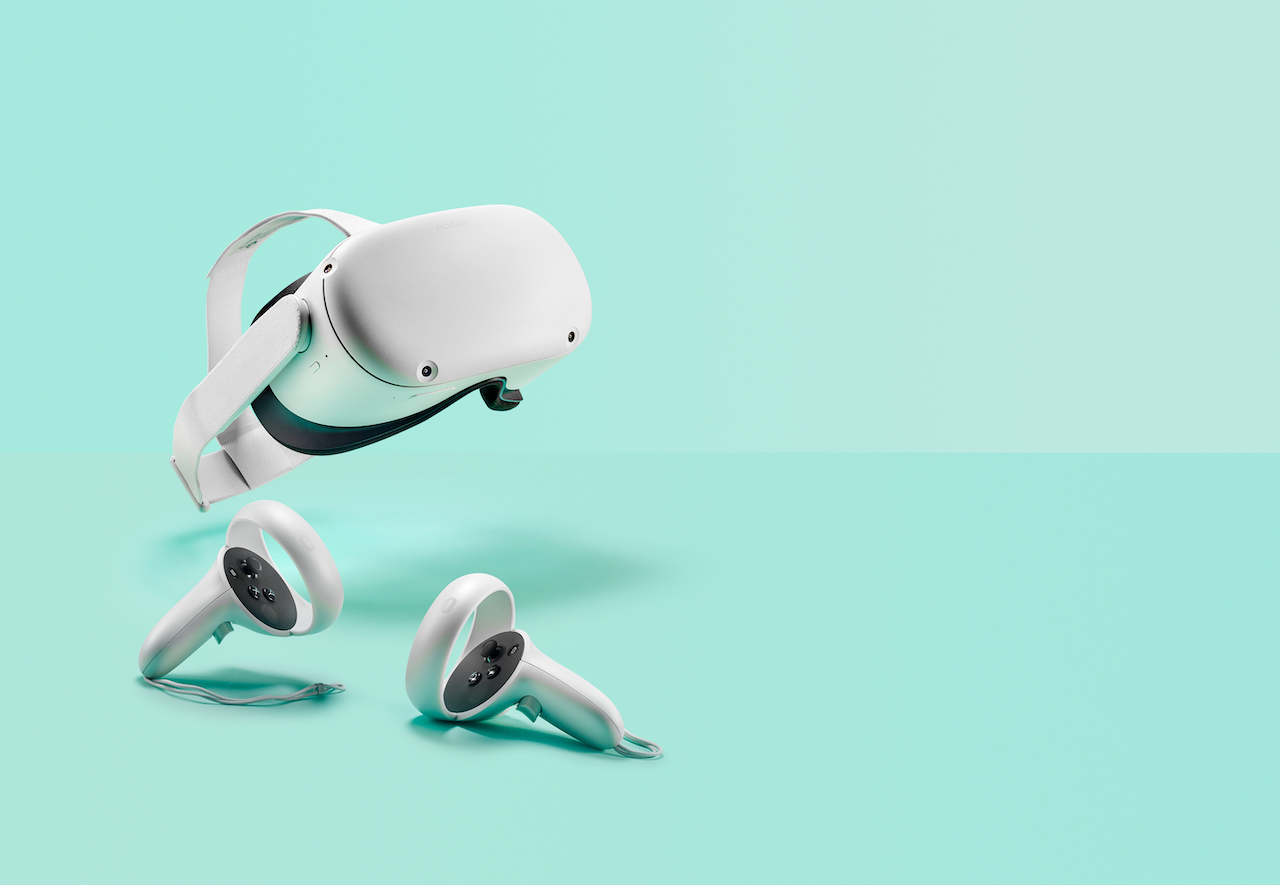

Just before Christmas, when it became clear that New York City was staring down the barrel of a long, socially-distanced winter ahead, I bought an Oculus Quest 2 headset. In a haze of new-gadget acquisition high, I rationalized the $299 purchase as an educational investment—a hands-on VR and metaverse learning experience and an opportunity to ‘get outside’ and ‘travel the world’ without actually getting outside or traveling the world. I also convinced myself that pretty soon, it was inevitable we’d start having conferences and Zoom meetings in virtual reality (VR), so I’d better be prepared—never mind the fact that not one single person I know or work with owns a VR headset.
Anyway. I’ve spent a lot of time wearing the Oculus Quest 2 this past week—mostly fishing for VR fish and playing a game called Smash Drums—and, aside from occasional motion sickness and almost tripping over an ottoman while riding a roller coaster and shooting dinosaurs, it’s been entertaining and great fun. Except for one thing: I’ve become absolutely certain that wearing a 1.2 lb (half-kilo!) headset, which rests entirely on the upper cheek area, is smooshing my face down and is going to give me wrinkles. Am I right?
RELATED: Snapchat debuts AR shopping for luxury fashion

“VR headsets can cause myopia, eye strain, headaches, and nausea,” says Dr. Madathupalayam Madhankumar of online medical consulting company iCliniq. “It does cause wrinkling of the skin, red marks, and hollowing underneath the eye due to continuous eye strain. The product can also cause rash, itching, and hives in allergic individuals. The enclosed area of the face within the headset can become quite warm after continuous usage due to a lack of air circulation. This causes sweating that can result in acne.”
Turns out there are a whole slew of dermatological and facial structural implications to wearing a heavy piece of equipment around your eyes for extended periods of time—and without proper preventative care, the damage can go far beyond the funny red goggle marks these headsets leave behind.
“With the constant pressure that the VR headset puts on your face, it can eventually lead to irritation in your skin,” says Robyn Newmark, founder of Newmark Beauty and a makeup artist and beauty educator based in Los Angeles. “After using one, you can see pressure marks on the orbital bone area, which are temporary. However, it is important to note that constant pressure on any skin can lead to skin ulcers, which can become tender and inflamed over time. When skin ulcers reach a certain degree, they can lead to infection.”
Newmark recommends one easy adjustment to protect your skin from the irritation a VR headset can cause: “I recommend putting tissue paper on the rim of the VR set in between, where it touches the skin,” she says.
And, like so many other personal tech and gadgets, preventing long term damage really just boils down to moderating use time.
“Regularly take 10-minute breaks every 30 minutes while using VR headsets,” Dr. Madhankumar says. Sanitizing shared products also keeps bacteria at bay. “Sanitize your headsets if you share, and between each use—clean it with a microfiber cloth and use facial interface covers.”
If you notice more active VR games are making you sweat, some quick post-VR real-life skincare will work wonders. “Wash your face after a session to remove the sweat and bacteria from the pores,” Dr. Madhankumar says. And if you notice any sagging, wrinkles, and acne, you can always consult your doctor or dermatologist for information on “Botox injections, laser skin resurfacing, fillers, and chemical peels. Above all, taking a break from using these headsets is recommended while undergoing these treatments for improved effects.”













